#Excelsior II Class
Explore tagged Tumblr posts
Text
"History Anew"
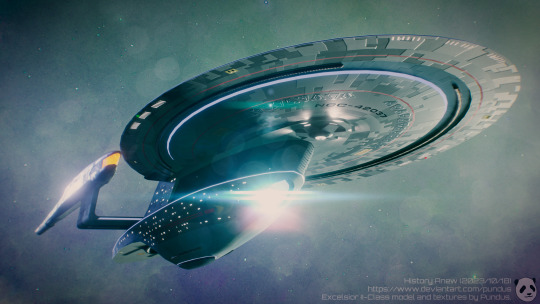
Itself and its class both named for the legacy of the original Great Experiment, the USS Excelsior, under Hikaru Sulu's command, the new USS Excelsior of the Excelsior II-Class sets forth to continue a storied legacy.
#fanart#star trek#3d render#blender#blender render#artwork#spaceship#starship#3d art#uss excelsior#excelsior class#excelsior ii class#star trek picard#star trek picard fanart
55 notes
·
View notes
Text

Milk and Honey Route by Jetfreak-7
22 notes
·
View notes
Text
Lots and lots of random spoilerific things about Star Trek comics
Gold Key's old run was written by people who had never actually seen the show. Later they involved fans like Doug Drexler to make things a bit more authentic
This however made them, IMHO, amazing
Blond scotty. Wearing green.
Voodoo planet, with papier mache versions of Earth landmarks which, when blasted with a death ray, cause the real ones to collapse
Spock learns voodoo to combat this threat
The Enterprise completely razes a planet of hostile plant spore things. Like full on extermination of all life
There's a locked room on deck 7 full of evil Vulcan spirits. A yeoman blunders in and all hell breaks loose
Kirk doesn't know what a god damn black hole is
Spock is kidnapped by aliens, has their entire knowledge downloaded into his brain which makes him into a bobblehead for awhile
The Enterprise is briefly taken from Kirk and given to Captain Zarlo, who is a total bellend
Spock forgets to have pointed ears sometimes
The old UK newspaper comic strips were even worse. The first few issues feature "Captain Kurt" and he wears a red shirt. Bailey is also a lead character, giving away which one episode they had knowledge of
Depictions of the Enterprise in their very first strip will shock and horrify you, but after that the art becomes amazing and maintains a very high standard
Marvel did a series following The Motion Picture, and it was a vast improvement, although they technically had rights to the movie and not the series, which led to a little weirdness. Tons of references still were snuck in, though
There's a series of Book and Records, which you can listen to on YouTube and are goofy fun. The Enterprise desperately needs a meal in the art, though.
They draw Romulans as green wizards
They didn't have the rights to Nichelle Nichols or George Takei's likenesses, so get ready for White Uhura and Black Sulu!
They didn't have the rights to The Animated Series either, so M'Ress is a human with weird face paint and Arex is substituted for just some guy
There's an unlicensed Chinese adaptation of The Motion Picture's novelisation (made with zero prior knowledge of Star Trek), which features an all-star cast like O.J. Simpson as Decker and James Brolin as Kirk. It's called The Star Trek, which is a better name than The Motion Picture, IMHO.
DC comics' first run is considered some of the best Trek ever. They're made with love and a deep knowledge of the source material
You know how Star Trek III takes place right after II? WRONG. It was several months later and the crew (with Saavik taking over from Spock) had tons of adventures in the interim. It just seemed like it was right after😂
Before Worf and long long before Ash Tyler, Kirk had a Klingon on his crew
He was a cowardly Klingon named Konom who fled the Empire
He fell in love with a human woman named Bryce
They adopted an albino Klingon/human child with dwarfism which they named Bernie
Kirk has an unhinged, insubordinate crewman on board named Bearclaw and they hate each other
Tension escalates and eventually there's a stabbing
Sulu/M'Ress happens and I don't think people knew what furrys were in the 80's
You know how Spock comes back at the end of III but isn't his old self until the end of Star Trek IV? WRONG AGAIN. He came back just fine, and lost his marbles following an incident months later that just happened to line everything up to make it all seem like it was right after.
After STIII, Kirk becomes captain of the U.S.S. Excelsior NX-2000 and Spock becomes captain of the U.S.S. Surak. We get a few issues exclusively focusing on Spock's ship and his band of merry weirdos.
The U.S.S. Surak keeps changing design, starting off as a sort of Oberth-class ship, then randomly becoming an Excelsior-class ship and finally ending as the warp sled shuttlecraft from The Motion Picture
The Surak's crew include a giant chicken man, a Vulcan hating racist lady and a balding man with a bicycle
They all die horribly and a massive reset button is pressed so everyone is exactly where they were at the end of Star Trek III
In order to make that work they had to bs that the Klingon Bird of Prey was hidden in Excelsior's shuttlebay all this time despite it being way, way too big for that
There's a full on mirror universe invasion
Kirk becomes a celebrity from saving the galaxy all the time
Mr. Arex comes back and becomes chief of security but doesn't really do much
HORTA CREWMEMBER. It's as amazing as it sounds
The first Next Generation comic miniseries was made with knowledge of the first 2 or 3 TNG episodes and nothing else
Everyone is hench as fuck. Picard has washboard abs and bulging muscles
Data is emotional and Troi feels the emotions she senses a la "Encounter at Farpoint"
Wesley is drawn as if he's 10
The B-shift con and ops team are a husband and wife who wear caped superhero versions of Starfleet uniforms with bare legs.
They argue. A lot.
The crew meet an alien Santa Claus and Q loses his powers years before "Deja Q"
The whole Q Continuum visits the Enterprise and they're all John De Lancie but in Starfleet uniforms of every colour under the sun.
After that initial miniseries, the Next Gen crew lose a lot of their muscle mass and start resembling their on screen counterparts a lot better
Picard had a brother who fell down a hole and died as a child. Q offers to rewrite history so he doesn't die. Claude Picard grew up to be Space Superhitler and turns Starfleet and the Federation fascist.
Before all this Q turned Jean-Luc into a goat for the lolz
Marvel's The Early Voyages was very literally Strange New Worlds before Strange New Worlds.
They have a pyrokinetic security officer named Nano and he's awesome
Marvel lost the Trek license quite suddenly, and so the series ends on a cliffhanger where Admiral April is up to something iffy.
Marvel did a Starfleet Academy series featuring Nog and its utterly fantastic
A female Andorian cadet tries to make Nog feel at ease by greeting him in the nude, but Nog fails to take it as an innocent gesture and she immediately sends him flying across the room
Romulan agents with split personalities in Starfleet Academy!
They visit Talos IV and get help from Captain Pike, who's still alive
IDW comics did a prequel to the 2009 reboot where Picard is an ambassador, Data is captain of the Enterprise-E and Nero has hair. It was co-written by the movie writers and was considered sort of vaguely semi canon ish for a time
They originally wanted the Romulan supernova to destroy a lot more, including Earth and have Nero kill the TNG crew. It was the Star Trek Online devs that got them to scale things back because they'd have no universe left to set their game in.
Nero's ship looks like it does because after Romulus was destroyed he took it to a secret Romulan base and had it equipped with reverse-engineered Borg technology
You thought DC struggled to keep ship designs correct? IDW's comics keep using traced fan art from Google Images, and fan art (sometimes with unique ship designs) has shown up on multiple occasions as the Kelvinverse U.S.S. Enterprise
In one IDW TOS comic, the bridge is totally covered with TNG LCARS graphics.
In another, an Orion ship is a gigantic Stargate sticking out of the middle part of Battlestar Galactica.
Wanna see Kelvinverse versions of TOS episodes? That was their first comics run, picking up after the 2009 reboot movie. They start off very faithful and as the series goes on things diverge more and more
To the extent some stories have very different backstories and outcomes
We visit 2 Kelvin mirror universes and a genderswapped universe too. No, Kirk doesn't do what you're thinking.
Q visits the Kelvin Universe and brings the crew forward in time to their version of Deep Space Nine
Nero's time in Klingon prison (from the Star Trek 2009 deleted scenes) and escape is fleshed out
Nero meets V'ger.
Nero mind melds with V'ger.
V'ger turns away due to the sheer force of Nero's hatred.
I wish I was making that up.
Klingons get their hands on Narada's technology and go to war
We get a Khan backstory where the Eugenics Wars are a full on nuclear conflict and "Khan" is the title that little Noon Sing adopts when he takes power
After being revived in the 23rd century, Admiral Marcus has Khan surgically altered to look like Benedict Cumberbatch as part of his John Harrison cover identity
They did a series of shorts called Waypoint, and in the first one Geordi is captain of a future Enterprise and his crew is made up of holographic versions of Data and it's a really sweet concept (this was several years before before ST: Picard brought Data back twice)
There's a prequel series centred around Number One where nobody manages to say her name before being interrupted. If you put the bits together it seems her name was Eureka Robbins. Of course, this is long before novels and SNW made her Una Chin-Riley.
#star trek#star trek comics#star trek the original series#star trek the next generation#star trek aos#star trek kelvin timeline#tng#star trek the animated series#dc comics#gold key comics#idw comics#marvel comics#deep dive
384 notes
·
View notes
Text

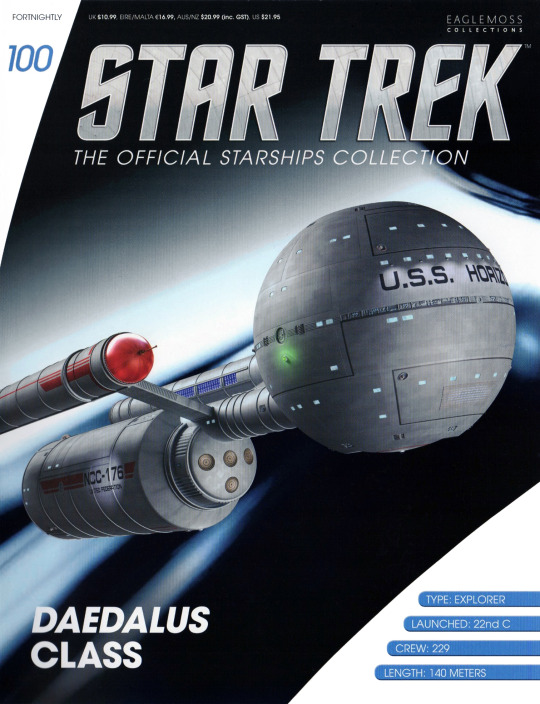
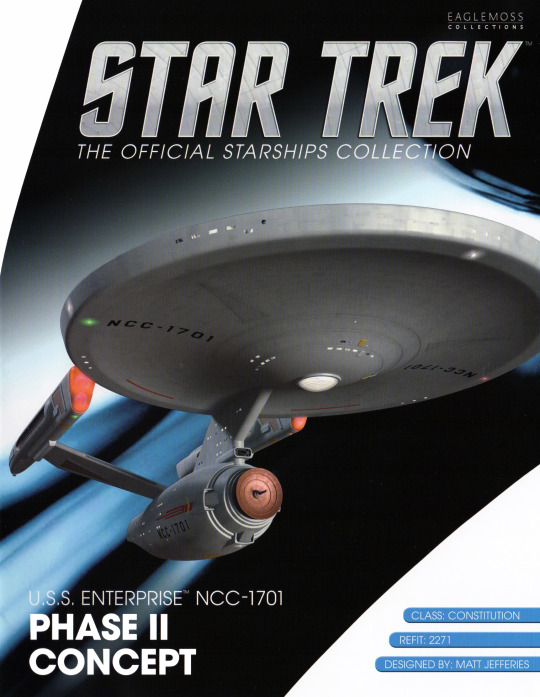

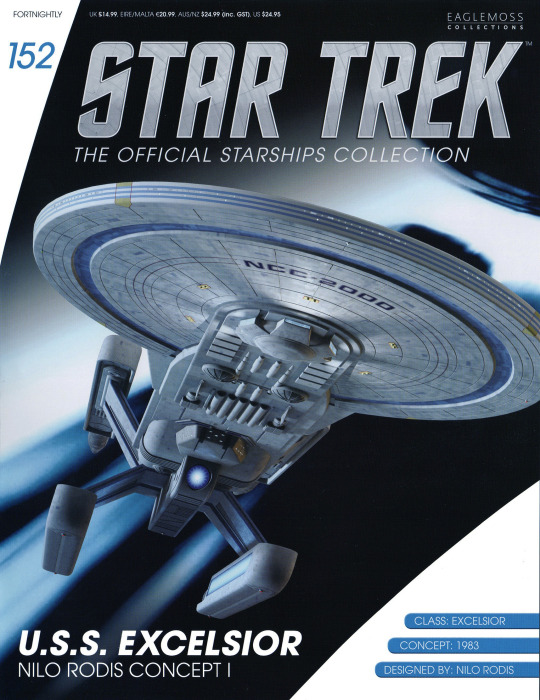



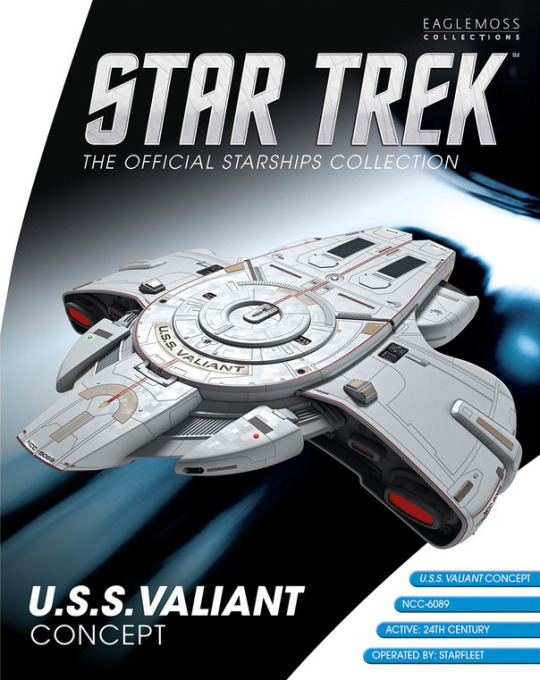
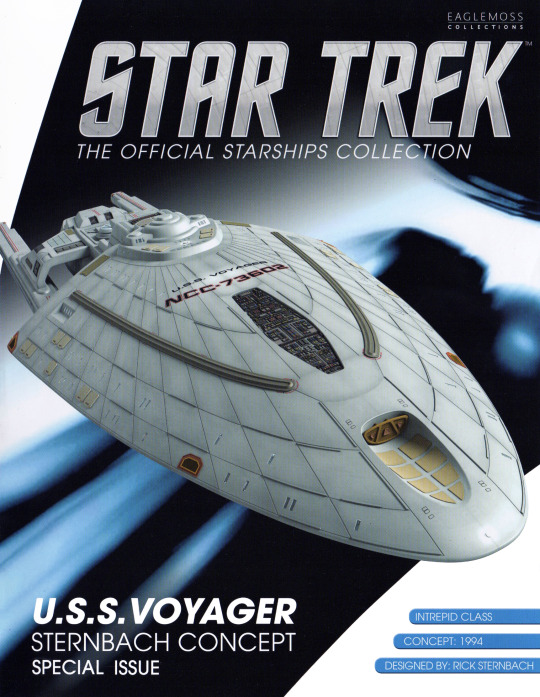
The final version we saw on screen wasn't necessarily how that ship started, so out of these specific ships, which one would you have wanted to see on screen
#Star Trek#Star Trek Ships#Starship#Starfleet#Concept Ship#Polls#Tumblr Polls#USS Enterprise#Ringship Enterprise#Daedalus Class#Phase II Refit#Phase II Enterprise#Enterprise C#Probertprise#USS Defiant#USS Valiant#USS Voyager#Nilo Rodis#Andrew Probert#Trek Posting
113 notes
·
View notes
Text
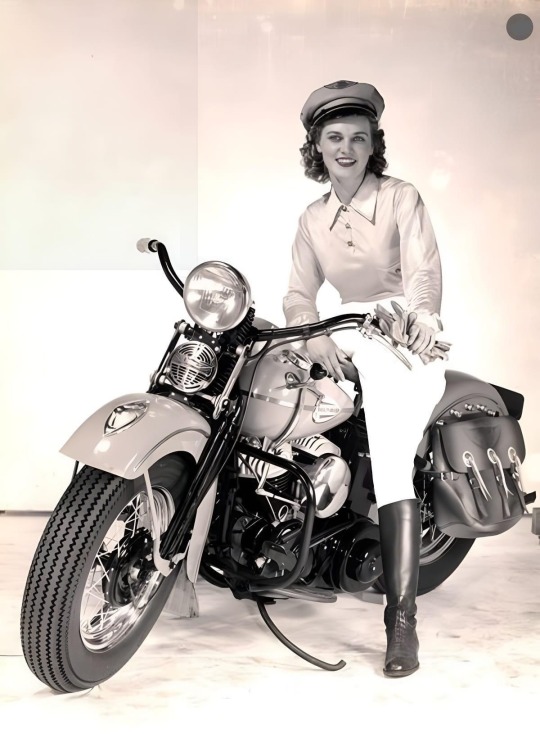
1941 HARLEY-DAVIDSON W 45CI FLATHEAD!
Harley-Davidson was late to market with its new 45 CI flathead Model D, introduced in 1929 to combat the exceptional popularity of Excelsior’s Super X and especially Indian’s remarkable 101 Scout.
The Model D was regularly improved in line with the rest of Harley-Davidson’s range, gaining a stronger frame in 1932 and numerous engine improvements including larger flywheels, aluminum pistons and better oiling, which warranted a name change to become the Model R that year. Five years later, yet more changes to the 45 CI line resulted in the Model W of 1937, which proved a stone reliable workhorse machine, hiding four camshafts inside its timing chest. Those individual cams made the W ripe for tuning, and it proved perfect for use in the new Class C racing, which allowed only catalogued machines of 45 CI (or OHV bikes of 500cc). Late 1930s Model Ws are rare, as home tuners across the U.S. worked their skills on the W and its variants: the WL, WR and WRLD models.
The continued use of Class C rules for AMA-sanctioned racing into the 1950s meant the Model W stayed in the Harley-Davidson catalog through 1952, while its engine remained in production through 1973 in the Servi-Car. The Model W’s longevity had much to do with its simplicity of design and heavy-duty construction; the flathead W is often mistaken for a “Big Twin” as it shares styling with its larger 74 CI and 80 CI brothers. The W is easy to tune and even easier to maintain in standard tune, and the WLA military version—“A” for Army—earned the nickname “the Liberator” in World War II. 1941 Harley-Davidson Model WLD is a rare machine, as only 302 Model W’s were manufactured that year, with the high-compression Model D Sport Solo variant being the least common. Within a few years, the flathead 45 CI would be built in the tens of thousands annually in preparation for World War II, but unmolested early civilian models are hard to find.
1 note
·
View note
Text
One of the things that's really gotten under my skin about Picard--and, to various extents, the Kurtzman era in general--is how lazy some of the class names are.
In the 25th century, we have the Constitution III/neo-Constitution class (e.g., the Titan-A) and the Excelsior II class. In the 32nd century, we have another generation of Constitution-class, probably the Constitution X at that point or something, and a new generation of Intrepid-class.
At least for the 32nd century ships, it makes sense. This is a heavily weakened Federation and Starfleet that's trying to lean into a more prosperous past, and that's on its way to rebuilding that former strength. Having things like new starship classes reuse older class names makes sense in that context: they're setting the standard they're hoping new officers will live up to, and they're tapping into some proud memory of how things were. It's the same reason they have an Archer Spacedock instead of naming it after a far more recent historical figure, basically.
This logic doesn't work for the 25th century's Constitution III or Excelsior II classes. This isn't a Starfleet at its weakest point. This is a Starfleet that, in the previous thirty years, had won the Dominion War (2375), struck a good, hard blow against the Borg that probably crippled them for a while (2378), and the destruction of their oldest enemies, the Romulans (2387). From a strictly military point of view, the Federation and Starfleet in the beginning of the 25th century is likely to be in the strongest position it's ever been in.
While there had been upsets like the Romulan infiltration from Picard's first season and the current Changeling infiltration, it's not like Starfleet has ever been free from alien infiltration. TNG had its own alien infiltration in Conspiracy, and DS9 had its own paranoia over potential Changeling paranoia--particularly prominent in Homefront/Paradise Lost, but it was a part of the buildup to the Dominion War at large. Given how in Voyager, Seska had been able to disguise her Cardassian heritage for years, some level of alien infiltration is probably expected in most of the major powers' military services, even if they aren't happy about it.
To me, what makes this tendency lazy isn't actually whether or not it's defensible from an in-universe perspective, though. It's because it's a tacit acknowledgement of a broader world-building question I've had for a while, but it doesn't actually give a solid answer.
The question is when does a starship class become a distinct class instead of just being a new variant? The Kurtzman era's answer is apparently just to gesture vaguely and say, "Dunno; just whenever the previous generation gets too old, I guess." This is an unsatisfying answer because it ignores that previously, the answer seemed to be a lot more nuanced than that.
In TNG's Cause and Effect, we're introduced to the Soyuz-class, which is visually so similar to the Miranda-class that you'd be forgiven for thinking they might be the same class. In dialogue, it's mentioned that the Soyuz-class was retired at some point in the 2280s, while the Miranda-class would remain in service until at least the 2370s.
Later on in DS9, one of the mashup ships that appeared in the background of some of the big fleet shots was the Yeager-type. Keep in mind that this was considered a type and not a class in its own right. It was a subclass of the Intrepid-class (the original, not the 32nd century version) that had the regular saucer section but an engineering section that resembled that of a Maquis raider.
So the Kurtzman era's solution to the question--that is, to try to wave it away--doesn't actually resolve the core issue. If anything, it actually causes the issue to become more complex.
In PIC's The Bounty, during the scene at the starship museum where Seven and Jack are seeing which ships he recognises and which he doesn't, Jack identifies the Enterprise-A as being a Constitution II-class. This is the TOS movie era version of the Constitution-class that most people who have a thing for Star Trek ships have been referring to as the Constitution refit for the last several decades.
Therein lies why this is now a more complicated question. Yes, the refit Constitution was visually very different from the original version from the show, and even in-universe, Will Decker (the captain in The Motion Picture) refers to this version as almost being a brand-new ship. However, I feel like almost should be the operative word there: even though this was a major refit, there was never the intent for this to basically be a brand-new starship class, despite what the Kurtzman era writers might have to say.
Plus, you know, there's still the question of what kind of refit makes it a brand new starship class. Clearly the kind of refit that might make a Constitution-class like the Strange New Worlds version of the Enterprise into something resembling how it looks in the original series or like the New Jersey doesn't count.
But also, neither does the kind of modifications the original Excelsior-class undertook that made the Enterprise-B look a little bit different to the original Excelsior. Or, apparently, the refit that the Lakota underwent in Homefront/Paradise Lost that gave it the kind of firepower to go toe-to-toe with the Defiant (which Chief O'Brien refers to as being unusual).
Honestly, I'm not sure if this era of Trek writers even has a solid answer to the question. They may want to be seen to have an answer, but I don't think it's one they've spent a lot of time considering. That's an unfortunate thing, given the fact they've decided that the Titan-A, a Constitution III-class, should be the hero ship for this final season of Picard.
I know this is a bit of a weird thing to have a bee in my bonnet about, but this has always kinda been one of the gaps in Star Trek's world building when it comes to starship design. I'd just like for there to be a solid answer to this that isn't stupid, given how there apparently is one in universe.
7 notes
·
View notes
Text
Fictober Day 6: “Didn’t We Already Have This Conversation?” Star Trek, TOS Characters
It was a slow day for the Enterprise crew. They’d recently set up orbit around Beta Gemini II and Captain Kirk had taken himself, Mr Spock, and Doctor McCoy down to the planet’s surface to explore, leaving the rest of the senior staff on the bridge to fly the ship and coordinate the crew. At the moment however, nothing urgent needed their attention, so Lieutenants Sulu and Uhura, Lieutenant Commander Scott, and Ensign Chekhov were chatting amiably.
“HG Wells did not write The Time Machine in Moscow, Mr Chekhov,” Mr Scott was saying. Chekhov shrugged.
“St Petersburg, then,” the young man responded. Sulu did not bother to hide his grin as Scott covered his face with his hands. He knew his friend was being obtuse for the sake of it- they all knew the book was written in England in 1985, but it was an easy way to ruffle the other crewmembers’ feathers, so Chekhov kept at it. Scotty opened his mouth to argue, but Uhura cut him off.
“Wherever the book was written, it was Wells’ experiences growing up in England that inspired his views on class inequality that’s reflected in the Eloi and Morlocks,” she said in a desperate attempt to get their trail of conversation back on track. But the effort seemed to come to naught as Scott’s communicator chirped, interrupting the book club.
“Yes, Transporter Room?” the senior officer asked, sitting up in the Captain’s chair.
“We’re having an issue beaming the landing party back aboard sir,” replied Mr Kyle’s tinny voice.
“I’ll be right down,” Scott told him, then flipped the communicator closed. “Mr Sulu, you have the conn. And don’t pause the discussion for me, I’ll be back in a jiffy!”
As Sulu took Scott’s place in the Captain’s chair to watch the bridge, he noticed Chekhov shaking his head. “Something wrong?” Sulu asked.
“Not really,” Chekhov laughed. “It’s just with the Captain and Mr Spock and now Mr Scott gone, you and Lieutenant Uhura are acting Captain and First Officer. It’ll take me years to get there!”
“And they’ll be years well spent,” Uhura smiled. “I was here as a cadet, but to be in the line of command at that time?” She shuddered, over-exaggerating the motion. “I’ve learned so much since then, I wasn’t near ready enough when I was your age! Be patient and pay attention, and you’ll end up with a command in no time.”
“You can be my first officer when I’m a real captain, Pav,” Sulu offered. “Scott and I have been keeping our eyes on those new designs of the starships they’re making, and they’re going to be real beauties, I’m telling you.”
He began to expand on all the new innovations the Excelsior class starship was going to have before he noticed Uhura was no longer paying attention to the conversation, instead frowning and tuning her earpiece that she used to pick up communications. “... You okay over there?” he asked her. She hesitated, and shook her head no. Sulu was next to her in an instant, Chekhov a half step behind him. She gestured to her communications array.
“I’m losing communications all over the ship- they’re blinking out one by one. I’m trying to raise them, but there’s nothing-”
The power cut out.
All Sulu could see was darkness. All he could hear was his own breathing. Where’s the backup power? he asked himself. He tried to slow his breaths. If the Enterprise really did just lose all power, then life support was fading fast. Blindly, he groped for one of the consoles to try and fiddle it back to life, but no matter which way he flailed he touched nothing. Weren’t Uhura and Chekhov right next to him?
And why was his heartbeat so loud? The sound enveloped his whole tiny, pitch black world, and he realized that it was getting louder and louder and louder and
It was a slow day for the Enterprise crew. They’d recently set up orbit around Beta Gemini II and Captain Kirk had taken himself, Mr Spock, and Doctor McCoy down to the planet’s surface to explore, leaving the rest of the senior staff on the bridge to fly the ship and coordinate the crew. At the moment however, nothing urgent needed their attention, so Lieutenants Sulu and Uhura, Lieutenant Commander Scott, and Ensign Chekhov were chatting amiably.
“HG Wells did not write The Time Machine in Moscow, Mr Chekhov,” Mr Scott was saying. Chekhov shrugged.
“St Petersburg, then,” the young man responded. Mr Sulu frowned. Uhura took notice.
“Sulu?” she asked gently. He shook himself and shot her the most charming smile he could.
“Oh, nothing,” he said. “I just felt a little… déjà vu, that’s all.”
“Of what?” Chekhov asked him, and Sulu gestured vaguely around them.
“Just… this. It’s gone now. Anyway, I think the book has less to do with where exactly it was written, because wealth inequality was everywhere at the time, but Wells is definitely drawing on his experiences growing up in England.”
“I had the same thought!” Uhura laughed. Scott’s communicator chirped, interrupting the book club.
“Yes, Transporter Room?” the senior officer asked, sitting up in the Captain’s chair.
“We’re having an issue beaming the landing party back aboard sir,” replied Mr Kyle’s tinny voice.
“I’ll be right down,” Scott told him, then flipped the communicator closed. “Mr Sulu, you have the conn. And don’t pause the discussion for me, I’ll be back in a jiffy!”
As Sulu took Scott’s place in the Captain’s chair to watch the bridge, he noticed Chekhov shaking his head. “Something wrong?” Sulu asked.
“Not really,” Chekhov laughed. “It’s just with the Captain and Mr Spock and now Mr Scott gone, you and Lieutenant Uhura are acting Captain and First Officer. It’ll take me years to get there!”
“And they’ll be years well spent,” Uhura smiled. “I was here as a cadet, but to be in the line of command at that time?” She shuddered, over-exaggerating the motion. “I’ve learned so much since then, I wasn’t near ready enough when I was your age! Be patient and pay attention, and you’ll end up with a command in no time.”
“You can be my first officer when I’m a real captain, Pav,” Sulu offered. “Scott and I have been keeping our eyes on those new designs of the starships they’re making, and they’re going to be real beauties, I’m telling you.”
He began to expand on all the new innovations the Excelsior class starship was going to have before he noticed Uhura was no longer paying attention to the conversation, instead frowning and tuning her earpiece that she used to pick up communications. “... You okay over there?” he asked her. She hesitated, and shook her head no. Sulu was next to her in an instant, Chekhov a half step behind him. She gestured to her communications array.
“I’m losing communications all over the ship- they’re blinking out one by one. I’m trying to raise them, but there’s nothing-”
The power cut out.
Sulu could not believe it. How had a starship like his Enterprise lost complete power, twice?
Wait, twice?
His heartbeat was louder and faster than last time, louder and faster, louder and faster, and Uhura and Chekhov were gone in the dark and he was alone and
It was a slow day for the Enterprise crew. They’d recently set up orbit around Beta Gemini II and Captain Kirk had taken himself, Mr Spock, and Doctor McCoy down to the planet’s surface to explore, leaving the rest of the senior staff on the bridge to fly the ship and coordinate the crew. At the moment however, nothing urgent needed their attention, so Lieutenants Sulu and Uhura, Lieutenant Commander Scott, and Ensign Chekhov were chatting. They seemed distracted.
“HG Wells did not write The Time Machine in Moscow, Mr Chekhov,” Mr Scott was saying, though he didn’t sound sure. Chekhov mumbled, “Maybe it was in St Petersburg, then.”
Uhura shook her head. “I’m sorry, I’ve just got the oddest sense we’ve done this before.”
The other bridge staff voiced their agreement.
“Something’s definitely wrong here,” said Scotty. “I think-” He was interrupted by his communicator chirping. “Yes, Transporter Room?”
“We’re having an issue beaming the landing party back aboard sir,” replied Mr Kyle’s tinny voice. Uhura mouthed every word each engineer said, a horrified look on her face as she did not know how she did it.
“I’ll be right down,” Scott told him, then flipped the communicator closed. “Mr Sulu-”
“I’d actually like to come down to the transporter room with you, Mr Scott,” Sulu said. Scott nodded and turned to Uhura. “Lt Uhura, you have the conn. We’ll be right back.”
The two men hurried down to Transporter Room One where Mr Kyle was waiting.
“I just can’t get a lock on them, sir,” he told Scott, who beelined to the controls. Sulu followed him, wanting to be able to lend a hand or provide a third opinion if they needed.
Scott lay down flat on his back underneath the console and reached up to remove a panel door. He hesitated a moment, but completed the action. Sulu, not three feet away, saw it spark in his friend’s face and the power went out.
For the first few heartbeats of the black, as Sulu got his memories of the previous loops back, he thought this reset would be the same. Nothingness black, deafening silence, and nonsensical solitude. And for the first few heartbeats, he was right.
Until the transporter started the hum. He could see three bodies made of golden light appear on the transporter pad. They reached out, and the humming drowning his crescendoing heartbeat. It was a whisper compared to their screams, which grew more and more and more and
It was a frustrating day for the Enterprise crew. They each knew something was wrong, but the reason why was maddeningly fuzzy. Their conversation stood abandoned for seemingly no reason halfway through as they sat in silence together, pondering why it felt like they had all done this many times before.
“I’ve had enough of this,” Scott growled as he stood.
“Where are you going?” Chekhov asked.
“Transporter Room. I’ve got a funny feeling they want me down there,” was all the Scotsman said as he marched off the bridge.
“If Mr Scott thinks there’s something wrong, we should check through the Enterprise’s systems- he knows her better than anyone. Ensign, lend me a hand,” Uhura said.
Both helmsmen rose from their seats- Chekhov to the Communications and Science consoles, and Sulu to the Captain’s chair. They could use another set of hands, maybe, but Sulu could think of one other way to help- try and contact the Captain and see what conditions were like on the surface. He was only Acting Captain at the moment, but it was Kirk who was truly in command, so if he knew anything that could save his ship, Sulu knew he’d try anything. Besides, Sulu was a competent officer but he knew when help was needed and never hesitated to reach out before, so why not now?
“Sulu to Captain Kirk,” he spoke into his communicator. Static. Uhura spared a moment to look it over, but she evidently did not find anything wrong as she handed it back a moment later with a shake of her head and a perplexed expression. Sulu thanked her for trying, and attempted to get in contact with the landing party again.
“Sulu to landing party,” he said.
“Yes, Mr Sulu?” came Spock’s reply. It was distorted, but comprehensible.
“We’re experiencing something strange up here, Commander. We were wondering what conditions were like for you on the surface.”
“Not well, Lieutenant. We’ve run afoul of a large amount of abiogeminic particles that for whatever reason the sensors aboard the Enterprise could not pick up.”
“I suppose that’s understandable, given how rare they are.”
“Yes. But despite not being too well studied in general, there have been some tests done with transporter technology near their fields. None of those tests have ended within satisfactory parameters.”
It took a moment for what Spock was telling him to sink in.
“So you’re trapped?” Sulu asked.
“Essentially, yes, unless these particles disperse or we find another way off this planet. Time is of the essence- the Captain and the Doctor are sick from the effect of these particles, and soon I will begin suffering the adverse effects as well,” Spock replied.
“I’ll contact Commander Scott. Hang on, sir.” Sulu quickly changed channels on his communicator and spoke quickly. “Sulu to Scott, this is urgent. Sulu to Scott!”
“Scott here. What’s happening on the bridge?” came Scotty’s rough brogue.
“I’ve just been in contact with Mr Spock. Do not go near the transporter apparatus. Apparently whatever they found down there wrecks the technology and produces a whole sort of bad effects.”
There was silence on the other end. Then came Scott’s soft and shaky reply, “I’m real glad you caught me when you did, Mr Sulu. I was just about to go prodding.”
The senior staff decided that launching the Galileo shuttlecraft would be the best way of rescuing their stranded crewmen. Sulu would pilot, and Nurse Chapel would accompany him to check on the Captain, Spock, and Doctor.
The rescue operation went off without much issue, and soon the three away team members were back to health and bickering like normal. The Beta Gemini II report was submitted, and the Enterprise could not get away soon enough.
At the end of the day, Sulu found himself in the break room enjoying some well-deserved off-duty time with Chekhov and Uhura. Scotty was in the transporter room now that they were a good distance away from the planet running tests to make sure they were in safe and working condition. From what he told the rest of the crew, those tests seemed to be going well.
“You did very well as Acting Captain, Mr Sulu,” Uhura told him. He raised a glass to her.
“And I couldn’t have asked for a better Acting First Officer myself,” he said. Chekhov shook his head.
“Something wrong?” Sulu asked.
“Not really,” Chekhov laughed. “It’s just with the Captain and Mr Spock and now Mr Scott gone, you and Lieutenant Uhura are acting Captain and First Officer. It’ll take me years to get there!”
“And they’ll be years well spent,” Uhura smiled. “I was here as a cadet, but to be in the line of command at that time?” She shuddered, over-exaggerating the motion. “I’ve learned so much since then, I wasn’t near ready enough when I was your age! Be patient and pay attention, and you’ll end up with a command in no time.”
“You can be my first officer when I’m a real captain, Pav,” Sulu offered. “Scott and I have been keeping our eyes on those new designs of the starships they’re making, and they’re going to be real beauties, I’m telling you.”
He began to expand on all the new innovations the Excelsior class starship was going to have when Chekhov interrupted.
“Didn’t we already have this conversation?”
#fictober21#my writing!#star trek!#can you tell I watched a horror show before writing this?#Sulu is the viewpoint character bc he's my favorite#artober!
6 notes
·
View notes
Text
1. Introduction: Project Akira
After the abortive Borg Invasion of 2366, the Advanced Starship Design Bureau, at the behest of Starfleet Command and the Federation Security Council, fast-tracked development of Project Akira. The initial design brief for Project Akira had been to develop and launch a new multi-purpose heavy cruiser which could replace Starfleet’s ageing Excelsior- and Miranda-class fleets. However, changed astropolitical circumstances meant changed design priorities.
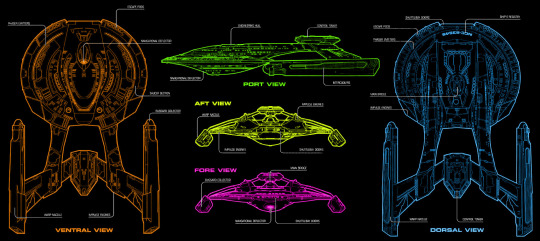
2. Competing Concepts (2366-2368)
The first-generation Akira-class starship was to become a combat-oriented heavy cruiser. Though it would maintain cutting-edge research facilities, the planned class’ operation brief was revised to maximise fleet-support, border defence and fast-strike capacity. The first wave of Akira spaceframes were already under construction at the Utopia Planitia Fleet Yards, Mars, and the Starbase 134 Integration Facility, Rigel VI, and early systems integration and tests would continue as the design teams at the ASDB reconceptualised the class.
The catamaran secondary hull was retained, though the engineering hull beneath the forward command section was shortened, limiting the design’s Y-axis profile. The planned research pod, located between the catamaran hulls, was repurposed as a “battle pod”, to be filled with multiple torpedo launchers and a significant arsenal. Furthermore, all phaser arrays were to be of Type-X, class 2, featuring three times as many emitters as the standard design. The primary hull would be largely given over to fighter bays, marine support and command and control technologies.
To this end, the new class would require miniaturised versions of power plant technology being developed for Project Sovereign in order to meet expected power demands and would feature significantly fewer amenities for embarked crew. Families and attached civilian personnel would not be allowed aboard, and the class’ range would be lower than a standard Starfleet explorer or heavy cruiser, largely limiting the Akira-class starship to operations within Federation space or a fleet context.
However, elements of the design team were not happy with this reconceptualisation. Starfleet’s focus on border-defence and deep-space exploration since the Khitomer Accords in 2293 had seen first the Ambassador-class starship and then the Galaxy-class starship, as well as related designs such as the Nebula-class and the New Orleans-class, take pride of place, while internal Federation operations, including survey, patrol, colony support and resupply missions, were increasingly shifted to an ageing fleet of so-called “workhorses”, including Excelsior- and Miranda-class vessels which were almost a century old.
These designers saw replacing these ships as a vital matter of security for the Federation, as the enormous interstellar state could see its internal supply and communication lines easily disrupted if these older ships were targeted. Supported by some admirals at Starfleet Command and Vulcan’s Federation Councillor, T’Latrek, a number of designers launched a parallel project with Project Akira, codenamed Project Next Step, aiming to make the Akira-class a reasonable stepping point between the Project Sovereign-era development scheme and Starfleet’s long-term plans, including the Project Luna deep-space explorer and the next-generation Project Vesta.
As a result of these changed circumstances, the projected launch date for the class was moved up from 2370 to 2368, with the prototype’s shakedown cruise to be completed by 2369 and the first generation of thirty-six spaceframes to be launched between 2369 and 2371. By 2367 the design was finalised, and systems integration was completed in February 2368. A second generation of sixty spaceframes was tentatively planned for a rolling launch between 2373 and 2378. Project Next Step aimed to have its designs incorporated in this second generation.
3. Launch and Shakedown (2368-2371)
The first starship of the class, U.S.S. Akira NX-62497, was launched in March 2368. The miniaturised Project Sovereign power plant worked well, and in war games and combat trials the starship met or exceeded expectations. However, during the shakedown period it became clear that a combat-focused starship was not conducive to long-term billets, and Starfleet Command implemented a high-changeover roster system, swapping crew out after six- or twelve-month tours of duty. With her shakedown period concluded, Akira returned to Rigel VI for minor refits, before she was officially commissioned and launched in April 2369.
The thirty-six spaceframe first generation of Akira-class starships was launched in three waves of twelve across three years [see appendix A].
The class performed well in the missions to which it was assigned, primarily combat support and patrol along the Cardassian, Tholian, Breen, Tzenkethi and Romulan borders. Still, with no further sign of Borg intervention in Federation affairs, Project Next Step’s work was continued, and the next generation of spaceframes was divided into two new sub-classes: the James T. Kirk-subclass of exploration-focused starships, incorporating Project Next Step’s innovations, and the Akira II-subclass of combat-oriented vessels.
However, there was significant resistance from some in Starfleet Command to this, and it was decided that a testbed vessel would be outfitted to the specifications of Project Next Step before the James T. Kirk-subclass was to be granted final approval for construction. As there were no new spaceframes which could accommodate the testbed due to be launched until 2373, this effectively delayed the launch of the sub-class until 2375, by which time Project Luna and Project Vesta were expected to have entered their final design phases. The delay would therefore render Project Next Step moot.
4. Project Next Step Finds a Home (2371-2373)
In November 2370, while patrolling the Lorenze Cluster, the U.S.S. Trinity was struck by a cloaked radiation mine. Most of the crew was killed, and the ship was badly damaged. Towed back to port, it became clear that the vessel would require a full refit. Due to the influence of Councillor T’Latrek, it was decided that Trinity would become Project Next Step’s testbed. Trinity was diverted to Utopia Planitia, and over the course of 2371 was completely redesigned and rebuilt.
The battle pod was repurposed once again, this time for science and exploration. The sensor technologies developed for Project Sovereign were incorporated into the design, and the ship’s tactical suite was significantly altered. The X-2 phasers were replaced with Type-XII phasers, the ship’s torpedo launcher count was reduced from fifteen to three, and the majority of space given over to fighter bays, marine support and command and control systems were replaced by expanded laboratory facilities, a hospital-grade medical facility and crew amenities.
Crew families and civilians would once again be welcome aboard, and a variable life support system would aim to make the ship welcoming for all of the Federation’s member species. Trinity and the rest of the James T. Kirk-subclass were to have the most diverse crews in Starfleet history, as a pathfinder for the similar goals of Project Luna. To help support this, the ship’s power plant was replaced with the full Project Sovereign design, altered to suit the new multi-mission parameters of the sub-class.
The abrogation of the Khitomer Accords by the Klingon Empire at the beginning of 2372 made many in Starfleet Command hesitant about going ahead with Project Next Step, but the successful launch of Trinity early that year, and her performance meeting or exceeding all expectations during the first months of her mission to the disputed Nikiian Sector along the Klingon border, convinced Command to sign off on the launch of the first wave of the Kirk-subclass: five vessels, alongside five Akira II-subclass counterparts.
5. Trial by Fire: The Dominion War (2373-2375)
These first waves were due for launch in 2373. The performance of the U.S.S. Thunderchild during the Borg attack on Earth during that year led to the renaming of the Akira II-subclass to the Thunderchild-subclass, and the performance of Trinity during that same battle assuaged any lingering fears about the inability of the explorer design to meet combat expectations.
The U.S.S. James T. Kirk herself was refit at Utopia Planitia and launched in June 2373, the de facto lead ship of the new subclass. The first five of the subclass’ spaceframes were named for former captains of Federation starships named Enterprise, and all were in service before the end of 2373. Likewise for the first five Thunderchild vessels, named for the five outer planets of the Sol system.
The outbreak of war with the Cardassian Union and the Dominion at the end of 2373 halted launch of the next planned waves of Kirk-subclass vessels, with the spaceframes earmarked for launch in those years instead fitted out as Thunderchild ships. The planned names of the Kirk-subclass vessels were held over. The 2374 wave of Thunderchild ships was named for significant naval battles in Earth’s history, while the 2375 wave was named for battles of the Earth-Romulan War during the twenty-second century.
The seven launched Kirk-subclass vessels performed admirably during the war, with no losses. While the original Akira-class vessels and the new Thunderchild-subclass ships suffered heavy losses during the war, the large-scale fleet conflicts that characterised many of the war’s largest battles proved perfect for the design and the losses were attributed to merely how often these ships were deployed in heavy combat rather than any inadequacies in design.
At the conclusion of the war, three further waves of both Thunderchild- and Kirk-subclass vessels were confirmed, while the remaining original Akira-class vessels were to be refit to Thunderchild specifications. The 2376 wave consisted of Kirk vessels named for famed Starfleet captains of the twenty-second century, while the 2377 wave was named for twenty-third century captains and the 2378 wave for captains of the twenty-fourth century [see appendix B and appendix C].
6. Victorious in War, Glorious in Peace (2375-2379)
The heavy losses suffered by Starfleet during the war and the demands of reconstruction during peacetime saw many of the Thunderchild vessels serve in support capacities throughout Federation space while the Kirk ships took on exploratory missions as many Nebula-, Galaxy- and Sovereign-class starships were reassigned to peace-keeping or diplomatic efforts. No special naming scheme for further Thunderchild commissions was announced.
There was very little difference between the baseline Akira design and the Thunderchild design, to the extent that it was officially designated Mark 1a. The Thunderchild featured updated systems and elements of the internal layout and power distribution system were altered for greater efficiency, and it was to these specifications that the original Akira-class vessels were upgraded at the end of the Dominion War. Though the original plan had been for thirty Kirk-subclass vessels and thirty Thunderchild-subclass vessels, the reality of war meant that only twenty of the planned Kirk ships were built while forty Thunderchild ships had been launched by the end of 2378.
Ultimately, the original Akira design, the James T. Kirk redesign and the Thunderchild upgrade were classified as unreserved successes by Starfleet Command. Project Next Step was vindicated by the success of the Kirk vessels, as well as the successful launch of the Luna-class long-range explorers in 2379 and the Vesta-class multi-mission explorers the next year. Lessons learnt from the Kirk ships during more than seven years of operation were incorporated into both designs.
7. The Future of the Fleet (2379 onwards)
Ultimately, the original Akira design, the James T. Kirk redesign and the Thunderchild upgrade were classified as unreserved successes by Starfleet Command. Project Next Step was vindicated by the success of the Kirk vessels, as well as the successful launch of the Luna-class long-range explorers in 2379 and the Vesta-class multi-mission explorers the next year. Lessons learnt from the Kirk ships during more than seven years of operation were incorporated into both designs.
In 2379, with seventy-eight Akira-class starships of both subclasses still in operation and meeting or exceeding Starfleet Command’s rolling expectations, the Advanced Starship Design Bureau was ordered to develop the Akira-class Mark 3, Sentinel-subclass, which would be launched in 2381 with a refit U.S.S. Sentinel NCC-68455. The new Mark 3 would fully incorporate the Mark 1a and Mark 2 designs to produce a true multi-mission heavy cruiser, purposefully balanced to meet the widest possible range of combat and exploration mission profiles.
The hundred-ship subclass, to be comprised of thirty refit Thunderchild-subclass vessels and seventy newly built Sentinel-subclass starships, would be rolled out between 2383 and 2390, with all refits to be completed by 2385. The end goal of this shipbuilding program was to give Starfleet the capacity to finally retire all twenty-third century starship designs. The projected subclass was expected to serve, with refits and upgrades, until at least the middle of the next century.
The third and final Borg Invasion of 2381 irrevocably altered this program. With Starfleet’s operational capacity reduced by up to forty per cent by the end of the invasion, the shipbuilding program was expanded and accelerated. The refit program was delayed, with only the Sentinel launched at Mark 3 specifications, and the remaining Mark 1, Mark 2 and Mark 1a Akira-class starships were diverted to Federation-wide reconstruction efforts. The Mark 3 Sentinel-subclass program was expanded to one hundred twenty starships, all newly built, to be launched before 2390. The Akira-class Mark 1 and Mark 1a Thunderchild-subclass would be refit to Mark 3 specifications during the final phase of this construction.
The Mark 2 James T. Kirk-subclass vessels were not to be refit as Mark 3 vessels but were to maintain their unique designs. Many of these vessels would continue serving Starfleet into the first decades of the twenty-fifth century, when their spaceframes would begin to reach the end of their operational lifespans.
Appendix A
Notable Akira-class starships
The prototype Akira was refit first as a Mark 1a Thunderchild vessel, before being brought into line with the Mark 3 Sentinel specifications. She was destroyed by the Tholians in 2386, an event which nearly triggered a war between the Federation and her allies and the Tholians and theirs. However, her surviving crew revealed that the destruction had come about as a result of miscommunication rather than naked aggression and averted armed conflict.
The Starship Trinity, the first of the Akira-class vessels to be brought up to the specifications of the James T. Kirk-subclass, was decommissioned in 2399 and sent to the Qualor II Surplus Depot. At that time, she had been commanded by the same officer, Captain Matthew Tye, for the majority of her service since her relaunch in 2372. Both ship and captain were immensely controversial within Starfleet. Trinity served with distinction against the Klingons, the Dominion, the Borg and later in the exploration of the Okeanos Corridor, but Tye developed a reputation for shirking Starfleet orders, most spectacularly in the aftermath of the 2381 Borg invasion when he stole the Starship Hillary for an unauthorised mission.
The James T. Kirk herself was famed for her exploratory missions under Captain Elias Vaughn between 2379 and 2381, when she was badly damaged during the Borg Invasion. While the Kirk was rebuilt and relaunched in 2383, Vaughn himself was killed and many of the crew were reassigned. She served with distinction until 2405, when she was retired with full honours and inducted into the Starfleet Museum. The Kirk would be housed at the Museum’s Orbital Annex above Earth as the prime example of an Akira-class starship.
The U.S.S. Thunderchild served with extraordinary valour during the Borg Invasion of 2373 and subsequently throughout the Dominion War. Unfortunately, she was destroyed with all hands by the Borg in early 2380, during the so-called “supercube crisis”. She was commanded first by Bern Okala, then Evelyn Hoffman and finally Hiroshi Matsuda. Her ten years of service to Starfleet were commemorated with the Thunderchild Memorial in San Francisco.
The U.S.S. Sentinel fought during the Dominion War under Anna Maria Amalfitano, and was instrumental in reconstruction efforts in Cardassian space after the war’s end. Sentinel’s missions at this time are credited as being vital to the eventual Federation-Cardassian alliance, and Captain Amalfitano became an important advisor on Cardassian affairs to Federation presidents for the rest of the twenty-fourth century. Sentinel herself served with distinction until she was decommissioned in 2415.
Appendix B
Akira-class Mark 1 launch schedule
2369
U.S.S. Akira NCC-62497
U.S.S. Geronimo NCC-62501
U.S.S. Gryphon NCC-62502
U.S.S. Essex NCC-62503
U.S.S. Trinity NCC-62504
U.S.S. Black Elk NCC-62505
U.S.S. Singh NCC-62740
U.S.S. Nautilus NCC-62741
U.S.S. Mitterand NCC-62742
U.S.S. Osceola NCC-62743
U.S.S. Meneleas NCC-62890
U.S.S. Nez Perce NCC-62891
2370
U.S.S. Rabin NCC-63293
U.S.S. Templar NCC-63294
U.S.S. Crusader NCC-63295
U.S.S. Capetown NCC-63302
U.S.S. Sharansky NCC-63303
U.S.S. Apache NCC-63304
U.S.S. Ascension NCC-63305
U.S.S. Red Cloud NCC-63306
U.S.S. Thunderchild NCC-63549
U.S.S. Quetzalcoatl NCC-63550
U.S.S. James T. Kirk NCC-63719
U.S.S. Spector NCC-63898
2371
U.S.S. Gettysburg NCC-67430
U.S.S. Fredricksburg NCC-67431
U.S.S. Vicksburg NCC-67432
U.S.S. Antietam NCC-67433
U.S.S. Sentinel NCC-68455
U.S.S. Bondar NCC-68568
U.S.S. Garneau NCC-68569
U.S.S. Kali NCC-68570
U.S.S. Susquehanna NCC-69300
U.S.S. Resilient NCC-69301
U.S.S. Nostromo NCC-69302
U.S.S. Osceola NCC-69303
Appendix C
Akira-class Mark 2, James T. Kirk-subclass launch schedule
2372
U.S.S. Trinity NCC-62504 ref.
2373
U.S.S. James T. Kirk NCC-63719 ref.
U.S.S. Robert April NCC-71261
U.S.S. Christopher Pike NCC-71262
U.S.S. John Harriman NCC-71263
U.S.S. Demora Sulu NCC-71264
U.S.S. Rachel Garrett NCC-71265
2376
U.S.S. Erika Hernandez NCC-75121
U.S.S. Carlos Ramirez NCC-75122
U.S.S. T’Pol NCC-75123
U.S.S. Resthenar sh'Prenni NCC-75124
U.S.S. Chim glav Soach NCC-75125
2377
U.S.S. Philippa Georgiou NCC-76661
U.S.S. Matthew Decker NCC-76662
U.S.S. Satak NCC-76663
U.S.S. Thomas Blair NCC-76664
U.S.S. Atish Khatami NCC-76665
2378
U.S.S. Hikaru Sulu NCC-78241
U.S.S. Margaret Sinclair-Alexander NCC-78242
U.S.S. Walker Keel NCC-78243
U.S.S. Donald Varley NCC-78244
U.S.S. Declan Keogh NCC-78245
Appendix D
Akira-class Mark 1a, Thunderchild-subclass launch schedule
2373
U.S.S. Mars NCC-71266
U.S.S. Jupiter NCC-71267
U.S.S. Saturn NCC-71268
U.S.S. Neptune NCC-71269
U.S.S. Uranus NCC-71270
2374
U.S.S. Salamis NCC-71421
U.S.S. Ecnomus NCC-71422
U.S.S. Puqi NCC-71423
U.S.S. Yamen NCC-71424
U.S.S. Lapanto NCC-71425
U.S.S. Jutland NCC-71426
U.S.S. Leyte Gulf NCC-71427
U.S.S. Pearl Harbor NCC-71428
U.S.S. Coral Sea NCC-71429
U.S.S. Midway NCC-71430
2375
U.S.S. Calder NCC-73551
U.S.S. Tarod NCC-73552
U.S.S. Deneva NCC-73553
U.S.S. Berengaria NCC-73554
U.S.S. Threllvia NCC-73555
U.S.S. Algeron NCC-73556
U.S.S. Gamma Hydra NCC-73557
U.S.S. Prantares NCC-73558
U.S.S. Galorndon Core NCC-73559
U.S.S. Cheron NCC-73560
2376
U.S.S. Androsia NCC-75126
U.S.S. Gallant NCC-75127
U.S.S. Devore NCC-75128
U.S.S. Jaganath NCC-75129
U.S.S. Begin NCC-75130
2377
U.S.S. Norris NCC-76666
U.S.S. Peerless NCC-76667
U.S.S. Aquino NCC-76668
U.S.S. Inverness NCC-76669
U.S.S. Resolution NCC-76670
2378
U.S.S. Poseidon NCC-78246
U.S.S. Virgil NCC-78247
U.S.S. Timberwolf NCC-78248
U.S.S. Rhodes NCC-78249
U.S.S. Mateo NCC-78250
Appendix E
James T. Kirk-subclass deck plans
A. Science module: specialised sensor arrays; module computer core upper level; specialised fusion generator.
B. Science module: observation lounge; module transporter room; probe manufacturing and modification facilities upper bay; science labs; shield generator; module computer core mid-level; probe holding bays; probe launcher
C. Science module: specialised sensor arrays; module sensor control; probe manufacturing and modification facilities main level; science labs; module computer core lower level; batteries.
1. Catamaran: warp plasma supercharger high bay; officers’ quarters.
2. Catamaran: warp plasma supercharger main level; officers’ quarters; catamaran engineering high bay; impulse drive manifolds.
3. Primary hull: captain’s ready room; main bridge; conference lounge. Catamaran: enlisted officers’ quarters; observation decks; antimatter loading distributors; emergency generators; nacelle access; shield generators; impulse fusion generators; impulse drives.
4. Primary hull: secondary sensor array high bay; secondary sensor control; emergency life support; holosuites; escape pods. Catamaran: officers’ quarters; enlisted officers’ quarters; enlisted personnel quarters; deuterium tank high bay; damage control and emergency supply lockers; impulse drive manifolds.
5. Primary hull: primary sensor array; enlisted personnel quarters; research facilities; cryogenic storage. Catamaran: senior officers’ quarters (starboard); VIP quarters (port); officers’ lounge (starboard); VIP lounge (port); officers’ quarters; deuterium tank mid bay.
6. Primary hull: officers’ quarters; holodeck 1 high bay (starboard); holodeck 2 upper bay (port); gymnasium upper bay; cetacean ops high bay (starboard); arboretum high bay (port); laboratory facilities; main crew lounge. Catamaran: officers’ quarters; deuterium tank main bay; shield generators.
7. Primary hull: officers’ quarters; holodeck 1 main bay (starboard); holodeck 2 upper main (port); gymnasium main bay; cetacean ops main bay; (starboard) arboretum main bay (port); hydrological laboratories (starboard); botanical laboratories (port); enlisted officers’ quarters; enlisted personnel quarters; formal dining room and galley (starboard); relaxation garden (port); shuttle command and control.
8. Primary hull: dorsal phaser array; phaser control; enlisted personnel quarters; main security and brig (starboard); sickbay (port); cargo bay 1 upper level (starboard); cargo bay 2 upper level (port), cargo bay 3 upper level (starboard); hydroponics bay 1 (port); stellar cartography lab upper bay (port); main shuttlebay upper level; escape pods
9. Primary hull: main sensor array; main sensor control; laboratory facilities; cargo bay 1 main level (starboard); cargo bay 2 main level (port), transporter room 1 (starboard); transporter room 2 (port); secondary bridge; main computer core upper level; transporter room 3 (starboard); transporter room 4 (port); cargo bay 3 main level (starboard); hydroponics bay 2 (port); stellar cartography lab main level (port); shuttle storage facilities; shuttle maintenance facilities; shuttlebay main level.
10. Primary hull: escape pods; ventral phaser arrays; forward torpedo launchers; torpedo control rooms; torpedo magazines; reaction control thrusters; shield generators; science laboratory complex (starboard) engineering laboratory complex (port); computer core upper mid-level; chief engineer’s office; main engineering high bay; industrial replication and fabrication upper level; reaction control thrusters and fuelling bays.
11. Primary hull: forward observation lounge; public galleys; cryogenic storage; tertiary sensor arrays; secondary security (starboard); secondary sickbay (port); computer core lower mid-level; main engineering main floor; swimming pool (starboard); gymnasium (port); dilithium intermix chamber; industrial replication and fabrication main floor.
12. Primary hull: battery compartments; science lab complex; main library centre; computer core lower level; emergency transporters; rear torpedo launcher; torpedo control rooms; torpedo magazines.
13. Primary hull: battery compartments; deflector array upper bay; deflector control; science lab complex.
14. Primary hull: main deflector array; emergency crew quarters; crew lounges.
15. Primary hull: antimatter storage; warp core ejection mechanism.
3 notes
·
View notes
Text

Excelsior Class from Starfleet Command II, 2000.
15 notes
·
View notes
Text
"Renewed Chase"
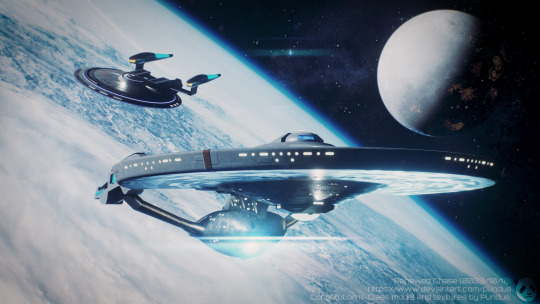
A recreation of a classic scene from Star Trek III: The Search for Spock, but with the new Constitution and Excelsior-Classes of the 25th century.
#fanart#star trek#3d render#blender#blender render#spaceship#starship#3d art#artwork#star trek picard fanart#star trek fanart#star trek picard#uss enterprise#enterprise#uss excelsior#excelsior ii class#constitution iii class#neo constitution#neo constitution class
48 notes
·
View notes
Text
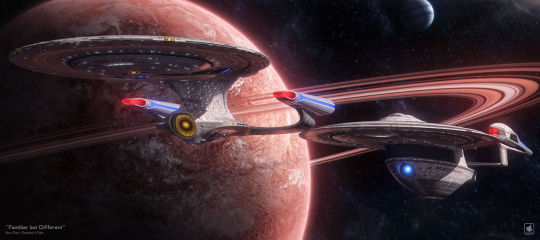
Familiar but Different by Jetfreak-7
49 notes
·
View notes
Text

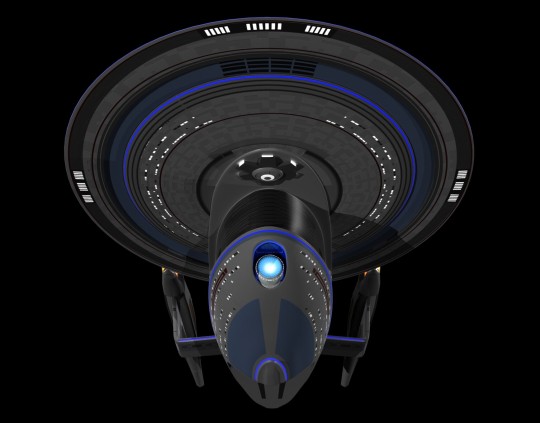
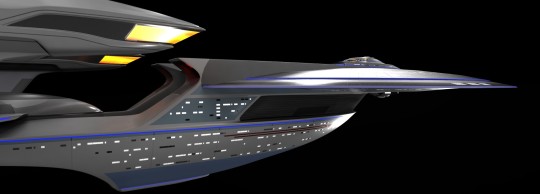
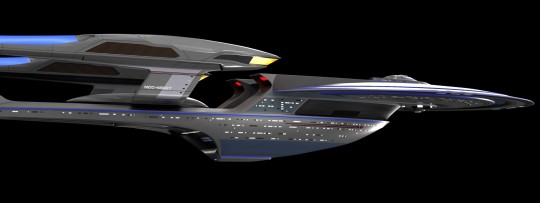

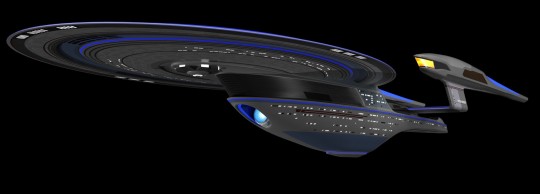

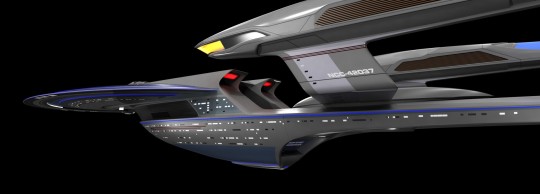
Excelsior II class U.S.S. Excelsior NCC-42037, from Doug Drexler's Artstation.
326 notes
·
View notes
Text
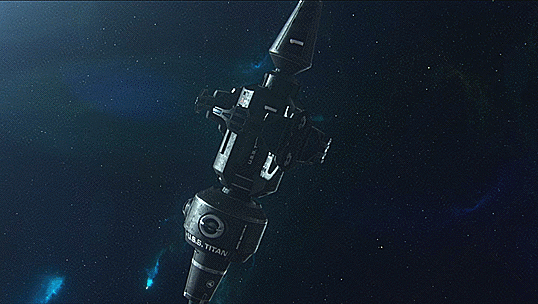
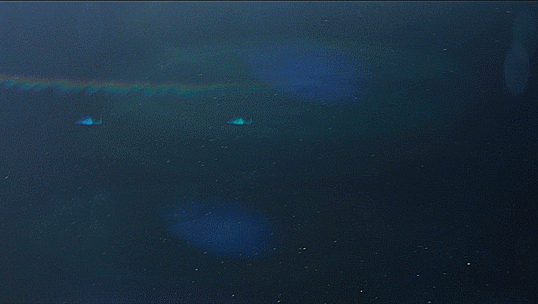
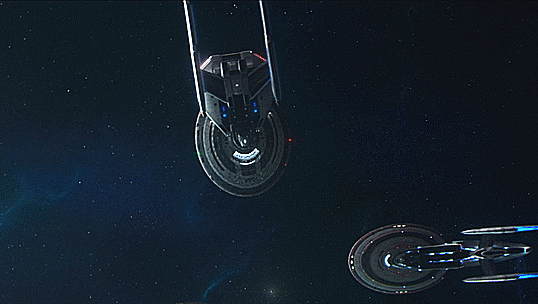
Star Trek Picard "The Bounty"
#Star Trek Picard#PIC#The Bounty#spoilers#Starfleet#Starship#USS Yorktown#Echelon Class#USS Trumbull#Duderstadt Class#USS Mestral#Excelsior II Class#picardedit#startrekedit#GIF#my gifs#Danny and Renae watch PIC#Hide and Queue
180 notes
·
View notes
Text
Credit-By-Examination Tests Can Help You Finish College Faster
Written by Porrnutcha Jivasakapimas Published Jul 7, 2020 10:02 pm
Many people may be concerned about how I can finish my bachelor’s degree faster for many reasons — “I’m a reapplying student.”, I’d like to lighten my family’s load earlier.”, “I’d like to share my family’s work sooner.”, etc.—. But only taking the exceeding maximum of credits per semester/trimester might not be the right solution since you’ll have to work double hard and have decent time management to stuff many subjects in your class schedule. Here is another alternative that will help you gain credits for certain college subjects without needing to study such subjects for the whole semester/trimester. We Will Explore College Equivalency Exam ~ ~ ~
_____________________________________________________________
Advanced Placement examinations (AP exams)

(Grapevine-Colleyville Independent School District, 2019)
Advanced Placement examinations (AP exams) are exams created by College Board, the same organization that produces SAT which is international university entrance exam. Betting all MUIC students who did not take direct exam must have taken SAT, so you guys might know about College Board. However, not many people know about AP exams since they do not arrange the tests frequently as SAT (7 times for U.S. and 4 times for international). AP exams only available annually which is around May. It can substitute many subjects we’re studying in college and is acceptable broadly (Even our university, MUIC, has accepted AP exam as well). AP exams often comes the format of multiple choices mostly with some short/long answers, depending on subjects. I recommend you take AP were you an MUIC student since MUIC receives AP and IB exams as a credit transfer, which can help accelerating your graduation.
Here is the full list of AP tests available. Take a look and if see if any subjects here match with subjects in you major, and considering taking it. You can register for AP as same as when you register for SAT. There are 38 exams in total:
AP Research
AP Seminar
Art History
Biology
Calculus AB
Calculus BC
Chemistry
Chinese Language and Culture
Computer Science A
Computer Science Principles
English Language and Composition
English Literature and Composition
Environmental Science
European History
French Language and Culture
German Language and Culture
Government and Politics (Comparative)
Government and Politics (US)
Human Geography
Italian Language and Culture
Japanese Language and Culture
Latin
Macroeconomics
Microeconomics
Music Theory
Physics 1: Algebra-Based
Physics 2: Algebra-Based
Physics C: Electricity and Magnetism
Physics C: Mechanics
Psychology
Spanish Language and Culture
Spanish Literature and Culture
Statistics
Studio Art Drawing
Studio Art 2-D Design
Studio Art 3-D Design
US History
World History (Modern)
------------------------------------------------------------------------------
College Level Examination Program (CLEP)
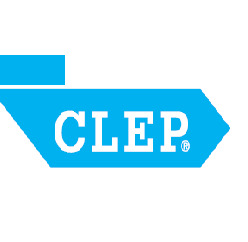
(Action Economics, 2014)
CLEP stands for College Level Examination Program. It’s more like GED tests, the testes where you take only 4 subjects, if passed, then you’d get a high school diplomat without having to go to the school for 3 year, doing any projects, or take midterms&finals. Sound convenient right? But CLEP isn’t exactly the same with GED. You cannot escape four years in a college even though you took CLEP. However, you can take some subjects that you hate (to go to the college to study it), and if you passed the CLEP exam of that subject you hate, that’s all. You don’t need to register to study such subject for the whole trimester. You can just transfer you score result and get the credits for that subject. No need to register for the course or enter any classes. This type of exams has both merit and pitfall when compared to its alternative, AP exams.
CLEP is better than AP that it is available year round. Just like GED, the exam is computer-based. So, you can appoint the test date in advanced and walk in to take the exams any day, anytime within the office hour that you’ve appointed. Since it’s internet-based exam, the score is calculated and reported immediately right after you finished. Nonetheless, CLEP isn’t as popular and broadly accepted as AP exams, and it’s testing centers are available only in foreign countries. Were you to take it, the nearest test center is at Dalat International School, Malasia. Apart from Webster University Thailand - Bangkok, I’ve never seen any other university in Thailand receives CLEP before, but talking about abroad universities, 2,900 colleges already granted/received CLEP.
Here are the sets of CLEP exams available via computer-based platform. It is arranged by 5 subject branches which are further divided into sub-subjects
Composition and Literature
These exams cover topics related to American and British literature and composition.
American Literature
Analyzing and Interpreting Literature
College Composition
College Composition Modular
English Literature
Humanities
World Languages
These exams assess comprehension of French, German, and Spanish.
Read more about World Languages
French Language: Levels 1 and 2
German Language: Levels 1 and 2
Spanish Language: Levels 1 and 2
Spanish with Writing: Levels 1 and 2
History and Social Sciences
These exams cover topics related to history, economics, and psychology.
Read more about History and Social Sciences
American Government
History of the United States I
History of the United States II
Human Growth and Development
Introduction to Educational Psychology
Introductory Psychology
Introductory Sociology
Principles of Macroeconomics
Principles of Microeconomics
Social Sciences and History
Western Civilization I: Ancient Near East to 1648
Western Civilization II: 1648 to the Present
Science and Mathematics
These exams cover various science disciplines and different levels of math.
Read more about Science and Mathematics
Biology
Calculus
Chemistry
College Algebra
College Mathematics
Natural Sciences
Precalculus
Business
These exams cover various business disciplines.
Read more about Business
Financial Accounting
Information Systems
Introductory Business Law
Principles of Management
Principles of Marketing
------------------------------------------------------------------------------
DANTES Subject Standardized Tests (DSST)

(DSST Credit by Exam Program, 2014)
DSST (formerly DANTES Subject Standardized Tests) are credit-by-examination tests originated by the United States Department of Defense's Defense Activity for Non-Traditional Education Support (DANTES) program. The program is an extensive series of 33 examinations in college subject areas that are comparable to the final or end-of-course examinations in undergraduate college courses. These tests are frequently used in conjunction with CLEP (College Level Examination Program) tests by students pursuing college degrees in non-traditional formats. Whereas CLEP tests are almost exclusively used for lower level credit at regionally accredited institutions, DSST's are available for both upper and lower level credit.
Prometric administers Internet-based versions of DSSTs under contract with the Defense Department (for military personnel) or on a fee basis (for civilians).
Business
Business Ethics and Society Business Mathematics Human Resource Management Introduction to Business Management Information Systems Organizational Behavior Money and Banking Personal Finance Principles of Finance Principles of Supervision
Humanities
Ethics in America Introduction to World Religions Principles of Public Speaking Principles of Advanced English Composition Math
Fundamentals of College Algebra Principles of Statistics Math for Liberal Arts Physical Science
Astronomy Environmental Science Health and Development Principles of Physical Science I Introduction to Geology Social Sciences
A History of the Vietnam War Art of the Western World Criminal Justice Foundations of Education Fundamentals of Counseling General Anthropology Introduction to Geography (formerly Human/Cultural Geography) Introduction to Law Enforcement Lifespan Developmental Psychology History of the Soviet Union (formerly Rise and Fall of the Soviet Union) Substance Abuse The Civil War and Reconstruction
Technology
Fundamentals of Cybersecurity Technical Writing Ethics in Technology
------------------------------------------------------------------------------
Excelsior College Examinations (ECE)

(UExcel, 2013)
Excelsior College Examinations (or ECE) are a series of eight, three-credit nursing theory tests offered by Excelsior College in Albany, New York. The exams are supported by corresponding online courses. Excelsior also offers the Clinical Performance in Nursing Exam, a two-day practical skills exam, as a capstone to the associate degree in nursing.
Excelsior also offers over 50 UExcel exams in liberal arts, business, education, and science. Many colleges and universities will grant college credit for each test, although UExcel credit is not as widely accepted as CLEP and DSST.
The exam administration period is typically 3 hours and the tests currently cost between $110 and $335. Each exam usually corresponds to a one or two semester introductory or secondary course on the topic, and many exams provide upper-division credit. Most ECE exams are considered equivalent to 3 credits in the semester system.
ECE exams are offered through Excelsior College and are administered at Pearson VUE test centers.
International Students: UExcel exams are administered at select international Pearson VUE Test Centers.
Abnormal Psychology
Adult Nursing
Anatomy & Physiology
Anatomy and Physiology I
Anatomy and Physiology II
Basic Genetics
Bioethics: Philosophical Issues
Business Ethics
Business Information Systems
Business Law
Calculus
College Writing
Contemporary Mathematics
Cultural Diversity
Earth Science
English Composition
Ethics: Theory & Practice
Financial Accounting
Foundations of Gerontology
Fundamentals of Nursing
General Chemistry I
Human Resource Management
Interpersonal Communication
Introduction to Computer Programming Using Java
Introduction to Macroeconomics
Introduction to Microeconomics
Introduction to Music
Introduction to Philosophy
Introduction to Psychology
Introduction to Sociology
Juvenile Delinquency
Labor Relations
Life Span Developmental Psychology
Literacy Instruction in the Elementary School
Managerial Accounting
Maternal and Child Nursing (Baccalaureate) *
Microbiology
Operations Management
Organizational Behavior
Pathophysiology
Physics
Political Science
Precalculus Algebra
Principles of Finance
Principles of Management
Principles of Marketing
Psychiatric / Mental Health Nursing *
Psychology of Adulthood & Aging
Quantitative Analysis
Research Methods in Psychology
Science of Nutrition
Social Psychology
Spanish Language
Statistics
Weather and Climate
Workplace Communication With Computers
World Conflicts Since 1900
World Population
------------------------------------------------------------------------------
References
Advanced Placement exams. (n.d.). Wikipedia. Retrieved from
https://en.wikipedia.org/wiki/Advanced_Placement_exams
Choose Your Exam. (n.d.). Excelsior College. Retrieved from
https://www.excelsior.edu/exams/choose-your-exam/
CLEP Exams. (n.d.). College Board. Retrieved from
https://clep.collegeboard.org/exams
College Level Examination Program. (n.d.). Wikipedia. Retrieved from
https://en.wikipedia.org/wiki/College_Level_Examination_Program
DSST (standardized test). (n.d.). Wikipedia. Retrieved from
https://en.wikipedia.org/wiki/DSST_(standardized_test)
Edwards, H. (2020, Mar 21). Complete List of AP Courses and Tests.
PrepScholar. Retrieved from https://blog.prepscholar.com/list-of-ap-exams
Excelsior College Examinations. (n.d.). Wikipedia. Retrieved from
https://en.wikipedia.org/wiki/Excelsior_College_Examinations
[Image of AP exmas logo]. (2019, November 1)
https://ghs.gcisd.net/news/what_s_new/a_p_testing
[Image of CLEP logo]. (2014, June 26)
https://actionecon.com/use-clep-exams-save-10000-college-costs/
[Image of DSST logo]. (2014, February 19)
https://www.facebook.com/DSSTgetcollegecredit/photos/a.429281599830/10152188095469831/?type=1&theater
[Image of Uexcel logo]. (2013, June 29)
https://www.facebook.com/UExcel/photos/a.430030276477/10151462609561478/?type=1&theater
Images - Writing and Citing: APA 7th Edition. (2020, Jul 10). LibGuides.
Retrieved from https://libguides.scf.edu/c.php?g=847004&p=6077102
Schinder, S. (n.d.). DSST Exam List. Study.com. Retrieved from
https://study.com/academy/popular/dsst-exam-list.html
_____________________________________________________________
1 note
·
View note
Text
playlist 12.03.18
John Elmquist's HardArt Groop Expeditionary Twitch (Bandcamp) Anna Von Hausswolff Dead Magic (City Slang) Ni Les Insurge Des Romilly (Dur et Doux) Gunther Schuller The Music of Gunther Schuller (Bridge Music) LoTic Power (Tri Angle) Rabit Life After Death (Halcyon Veil) Muse Simulation Theory (WB) Mimika Orchestra Divinities of the Earth and the Waters (PDV Records) Marie Davidson Workin Class Woman (Ninja Tune) Silvery Thunderer & Excelsior (Blow Up Records) Senyawa Sujud (Sublime Frequencies) Berio (performed by Iktus Ensmeble + Mike Patton Laoborintus II (Ipecac) Troot Constance and the Waiting (Troot) John Carpenter Halloween (2018) OST (Sacred Bones) Harrison Birtwistle The Triumph of Gawains Journey (Collins) Clint Mansell Mute OST Nick Prol & The Proletarians Loon Attic (Daba Da) Low Double Negative (Sub Pop) Hauschka The Boy OST (Milan) Fia Fiell All In The Same Room (Nice Music) Far Corner Risk (Cuneiform)
#John Elmquist's HardArt Groop#playlist#Anna Von Hausswolff#Ni#Gunther Schuller#LoTic#Rabit#Muse#Mimika Orchestra#Marie Davidson#Silvery#Senyawa#Berio#Iktus Ensmeble#Mike Patton#Troot#John Carpenter#Harrison Birtwistle#Clint Mansell#Nick Prol & The Proletarians#Low#Hauschka#Fia Fiell#Far Corner#jg thirlwell
31 notes
·
View notes
Text
"243- Special Presentation- The Excelsior II Class (Space Engine)" を YouTube で見る
youtube
0 notes